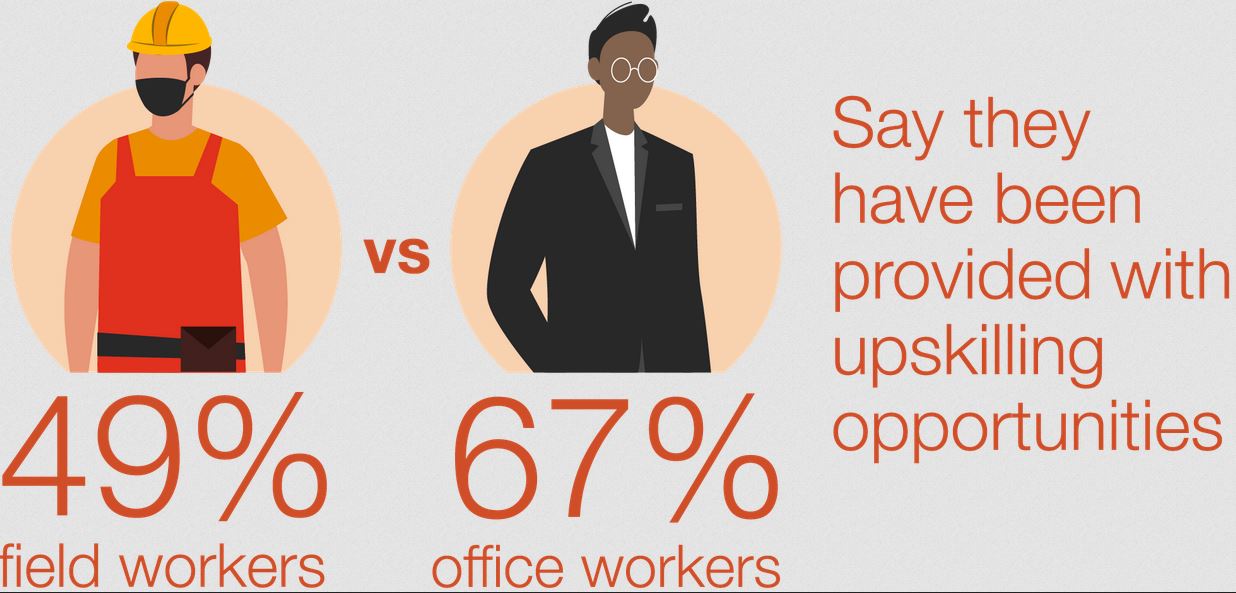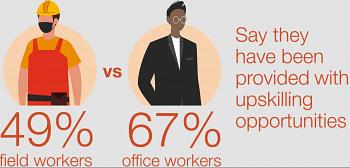Bridging the Digital Divide: How to ensure Canadian oilfield and utilities workers are ready for the impending technology transformation
Three key recommendations from PwC’s field worker survey
The pace of technology change is expected to accelerate over the next decade — are field workers in the oilfield and utilities sector ready?
PwC’s Canadian field worker study* (conducted February 11 to 17, 2021) takes the pulse of Canadian field workers — full or part-time employees who pre-pandemic spent most if not all of their workday in a non-office setting and are employed by a larger company or organization.
The survey indicates field workers do not believe the pace of technology change will affect their jobs. And yet we know that technology uptake by producers and service providers continues to accelerate (e.g. the use of artificial intelligence at wellsites; automation in the oilsands).
But the overwhelming majority of OFS and utility field workers in the survey responded they are not concerned that their jobs will become automated or obsolete due to digitalization and changing operating models.
The report outlines three key recommendations to ensure that field workers are able to bridge the digital divide:
- Be bold and challenge old ways
Technology and upskilling can bring efficiencies that result in cost savings, improved operations and enhanced customer experience.
The survey indicated only 49% of field workers have been given upskilling opportunities. This is in contrast to our first workforce survey, where two-thirds of office employees (67%) say they were given upskilling opportunities.
Organizations must ensure that digital applications go beyond automating manual tasks.
- Reinvent the career path
We need to start seeing non-linear career paths, where skills can transfer over to newer roles. Are you recognizing these skill-based connections at your organization, or seeing talented professionals leave whom you may want to keep?
Organizations must think of their entire workforce if they want to reap the benefits of upskilling and technology. Are certain non-office workers being forgotten in the new world of work?
It’s also important for organizations to consider how they can use Robotic Process Automation (RPA) and Artificial Intelligence (AI) to assist in career mapping and direct talent in a strategic way.
Mirroring results of our previous survey, field workers given opportunities to develop their digital knowledge and skills have a more positive view of leadership, are more likely to have the tools they need to do their jobs and are more likely to do more of their job digitally — both before and during the pandemic.
- Optimize performance
Take your best operator, learn from their routines and tool usage, and enable all operators to perform at the same level. It’s imperative to understand and socialize the impact that digital solutions have on field operations and driving overall business productivity.
Your digital strategy should be inclusive of all areas of your business — and efficiencies can be achieved through empowering your field team to leverage technology to help inform decisions in the moment. Real-time monitoring and maintenance tools can empower your field team to make choices based on current situations, as opposed to reviewing historical data.
Comments
There are 0 comments on this post






